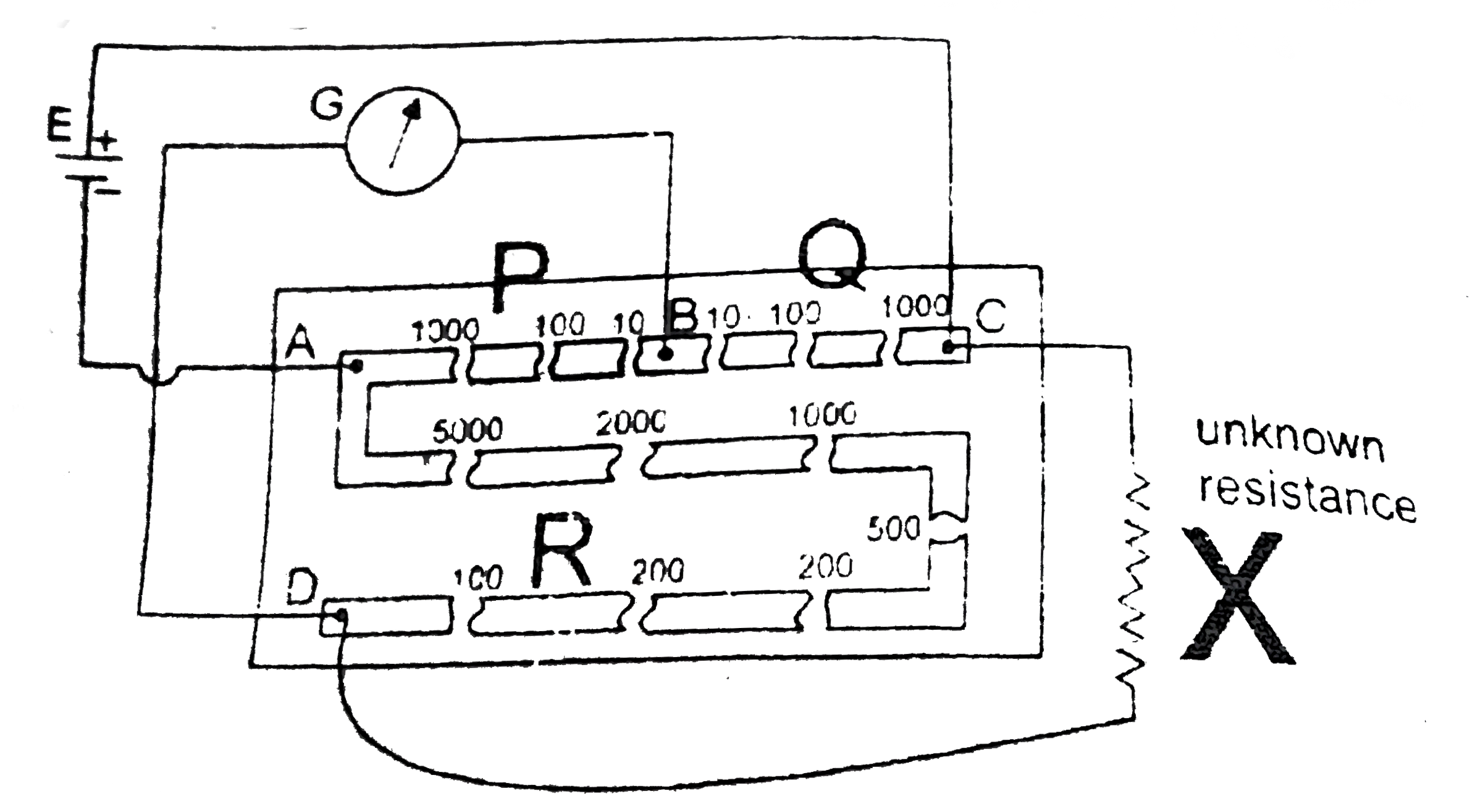What are the maximum and minimum values of unknown resistance X, which can be determined using the post office box shown in the fig.3.34?
Video Solution
Text Solution
The correct Answer is:A, B
X=QRp
∴Xmax=QmaxRmaxPmin
=100010(11110)
=1111kΩ
Xmin=QminRminPmax
=(10)(1)1000
=0.01Ω.
|
Updated on:21/07/2023
Topper's Solved these Questions
- BOOK - DC PANDEYCHAPTER - EXPERIMENTSEXERCISE - Exercise 3.12videos
EXPERIMENTS
- BOOK - DC PANDEYCHAPTER - EXPERIMENTSEXERCISE - Exercise 3.22videos
EXPERIMENTS
- BOOK - DC PANDEYCHAPTER - ELECTROSTATICSEXERCISE - Integer17videos
ELECTROSTATICS
- BOOK - DC PANDEYCHAPTER - FLUID MECHANICSEXERCISE - Medical entranes gallery49videos
FLUID MECHANICS
Similar Questions
Knowledge Check
- Question 1 - Select One
What is the maximum and minimum possible resistance which can be determined using the PO Box shown in above .
A1111kΩ,0.1ΩB1111kΩ,0.01ΩC1111kΩ,0.001ΩDNone of these - Question 2 - Select One or More
In the figure shown below, the maximum and the minimum possible unknown resistance (X), that can be measured by the post office box are Xmax and Xmin respectively : (In this experiment we take out only one plug in arm AB and only one plus in arm BC, but in arm AD we can take out many plugs) :
 AXmax=500kΩ,Xmin=1ΩBXmax=900kΩ,Xmin=1ΩCFor the closer measure of X,PQ ratio should be increasedDFor the closer meaure of X,QP ratio should be increased
AXmax=500kΩ,Xmin=1ΩBXmax=900kΩ,Xmin=1ΩCFor the closer measure of X,PQ ratio should be increasedDFor the closer meaure of X,QP ratio should be increased - Question 3 - Select One
For what value of unknown resistance X, the potential difference between B and D will be zero in the circuit shown in the figure ?
 A4ΩB6ΩC2ΩD5Ω
A4ΩB6ΩC2ΩD5Ω
Find the maximum and minimum values of f(x)=|sin4x+3| on R , if any, without using derivatives.
View SolutionFind the maximum and minimum values of f(x)=−|x+1|+3 on R , if any, without using derivatives.
View SolutionFind the maximum and minimum values of f(x)=x3−1 on R , if any, without using derivatives.
View SolutionThe maximum and minimum values of (3×3) determinant whose elements belong to {0,1,2,3} is
View SolutionWhat is the maximum resistance which can be made using five resistors each of (1/5)Ω ?
View Solution

